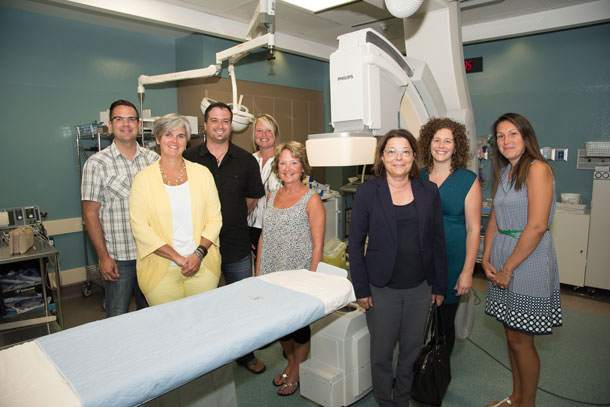

THUNDER BAY – Healthbeat – The impact of research on the future of healthcare is obvious – research helps us find the new medical treatments of tomorrow. But does research have any impact on the availability and quality of healthcare for patients today?
“As a matter of fact it does,” says Janet Northan, Director of Government Relations at the Thunder Bay Regional Health Sciences Centre and the Thunder Bay Regional Research Institute (TBRRI).
The PET/CT, which helps diagnose lung cancer, is just one example.
“In the past, specialists such as Dr. Ken Gehman (who treats lung cancer patients in Thunder Bay) would send people to Toronto for a PET scan,” Northan said. “Now we can do them here. We have a PET/CT scanner in Thunder Bay because we pooled research and patient care dollars to make it happen.”
Northan also noted a relatively new MRI unit that is shared between researchers and patient care programs, which has helped reduce wait times for MRI scans for patients.
The cyclotron, a device used to create radioactive isotopes for nuclear imaging, is another example. A world shortage not long ago coupled with the challenges associated with flying these isotopes to Thunder Bay underlined how vulnerable both patient care and research were to delays. It will be the research dollars that will bring the cyclotron here so that we don’t have to rely upon outside sources for radioactive isotopes.
Residents in Northwestern Ontario are also directly affected by the research itself. For example, ongoing clinical trials give us more treatment options. Locally, a TBRRI clinical trial investigating the use of high-intensity focused ultrasound (HIFU) to “cook” uterine fibroids turned into a new, non-invasive treatment alternative to surgical procedures, giving women more options.
Then there are the intangible benefits to patient care. Medical professionals including specialists tend to like to work in academic centres – whether they themselves are doing research or not – simply because they have access to the latest tools. There is also a certain prestige that comes with working at an academic health sciences centre like the one developing here in Thunder Bay.
It’s also incredible to think that someone born in Thunder Bay can now train to be a research scientist and develop a career without ever leaving the city.
The benefits of local research are clear. Studies like one March 2012 paper published in the Journal of the American Medical Association (JAMA) showed that in Ontario, patients treated at academic hospitals (i.e. acute care centres with research and teaching programs like the Health Sciences Centre) tended to have better outcomes.
Then there is the growing health cluster in Northwestern Ontario, of which TBRRI and the Health Sciences Centre are a part. The relatively new Northern Ontario School of Medicine (NOSM), new programs at Lakehead University and Confederation College like its REACH (Regional Education Alliance for Community Health) building and program, TBRRI spin-off companies, health-related companies headquartered in Thunder Bay, and more that have a direct or indirect impact on patient care.
In short, research has a large impact on the quality of care the Health Sciences Centre is able to give today.
“The best thing a community can do to advance healthcare in their region is to create a focused research program and promote healthcare training,” Northan said. “That’s exactly what we’ve done here.”






